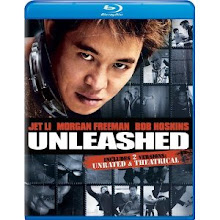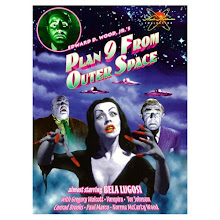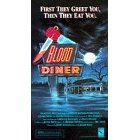by Jason Pyles
The film ends and we the viewers — and all the characters (save one) are still waiting for Mort Guffman. If nothing else, the movie is aptly named.
“Waiting for Guffman” is the only film I can recall that refers to Dairy Queen. Blaine, Missouri reminds me of Grinnell, Iowa. If you’re ever traveling along Interstate 80, be sure to stop at Grinnell’s Dairy Queen. When I was moving to Utah in 2002, like a siren or the mistaken Blaine Fabin, Grinnell almost abbreviated my trek west and convinced me to settle permanently in the Midwest.
In case you’re wondering, a place called Blaine, Missouri seems to exist, according to various Internet sources. But the movie was filmed in Texas and California.
Released in 1997, “Waiting for Guffman” has to be among the first few mockumentaries, as we know them today. “The Office,” particularly Steve Carell’s Michael Scott, is recognizable in some of these characters. Perhaps this film was one of the inspirations for both “Office” series.
But if I had to guess (and digress), I’d say the very first mockumentary was probably “Nanook of the North” (1922), where documentarian Robert Flaherty filmed an Inuit (Eskimo) man called “Nanook,” or Allakariallak. Flaherty intended to portray this man and his supposed family’s arctic lifestyle, but many of the shots are said to have been staged by the filmmaker.
Now this is where the nature of documentaries can be argued: Even though Flaherty wasn’t necessarily trying to be funny in his attempt to document these people, his overt influence of the documentary film doesn’t differ much from planning a fake documentary like “Guffman,” a mockumentary. Indeed, a filmmaker’s mere decision concerning where to position the camera can distill meaning, which is an argument that could be made about any documentary. (By the way, according to movie critic Pauline Kael, “Nanook of the North” was filmed in 1920 and 1921, and its subject, Nanook died of starvation two years later.)
This has little to do with “Waiting for Guffman,” which is a film that was obviously designed to be a comedy. It’s built well: “Guffman” begins with introducing us to the characters while simultaneously filling us in on the history of the town — facts that will enhance the humor and enjoyment of watching the musical.
But the film’s magnetic core is Corky St. Clair (Christopher Guest), who also directed and co-wrote the film. Like the heavy kid on a trampoline, St. Clair pulls all the characters toward him into the middle. And we can see and feel his paramount presence when he temporarily quits the production.
I love any movie that gives us actors who are playing characters who are acting. In this way, we get complicated layers — a feat that requires significant concentration on the actor’s part. Christopher Guest did this well: He continued to give us his effeminate Corky St. Clair while filling in for the dropout Johnny Savage. (Other great examples of roles within a role are Robert Downey Jr.’s Kirk Lazarus in this year’s “Tropic Thunder,” and Ed Norton’s Aaron Stampler in “Primal Fear” (1996).
Bill Barnes chose “Waiting for Guffman.” I initially wondered why, but then I realized when I heard a woodblock making the clickety-clop of horses’ hooves and the musical performance at the nursing home. Bill thought Billy Joel used some sophisticated machinery to recreate the sound of a horse walking, but I always told him that Mr. Joel was doing it with his mouth, and when we saw him “Kohept,” indeed he was.
And Bill and I played not a few concerts for the shut-ins at Moundview Nursing Home in Moundsville, W.Va. I’m confident those poor people would have preferred to see a production of “Red, White and Blaine.”
Friday, November 28, 2008
Subscribe to:
Post Comments (Atom)






























































No comments:
Post a Comment